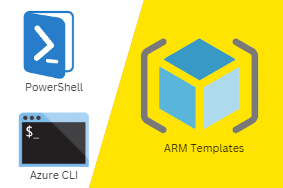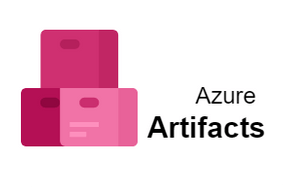Azure Stack is a comprehensive offering that combines compute, networking, and storage into one solution with the intent of providing an extension of Azure on-premises or in your own datacenter. It’s easier to deploy and manage than traditional IaaS cloud solutions, allowing you to focus on building applications instead of managing infrastructure. In this article, we’ll walk through the process of deploying Azure Stack in your own datacenter or hosting provider using Azure Resource Manager templates and PowerShell scripts.
What is Azure Stack?
Microsoft Azure Stack is an extension of Azure that allows you to run Azure services in your own datacenter. So it offers all that great public cloud goodness but within your own firewalls and behind your load balancers—which means no public IP addresses or internet-based administration. Plus, by provisioning virtual machines and other resources in your own environment, you can ensure they’re secure, safe from hackers, etc. You could say it’s part public cloud, part private cloud. In fact, Microsoft even refers to it as private cloud in a box. It’s essentially everything you love about Azure with none of the stuff you don’t want. (Source: PC Mag)
Azure Stack feature set
Part of Microsoft’s plan to unify its Azure public cloud with its Windows Server and System Center software is a cloud in a box offering called Azure Stack. Azure Stack is a solution that brings Azure’s capabilities into an organization’s data center, so organizations can deploy, manage and secure it within their own infrastructure. In addition to providing customers with much more control over their information infrastructure, Cloud Solution Providers (CSP) will have an additional business opportunity for selling hybrid cloud solutions. Whether you are thinking about becoming a CSP or if you are just evaluating your current strategy, understanding how CSPs may integrate Azure technologies can help you gain insight into your business growth opportunities.
Azure Stack hardware
Azure Stack requires a minimum of two physical servers, although Microsoft recommends three. At launch, each server must be running Windows Server 2016 Datacenter Edition with at least two virtual machines (VMs). Microsoft is expected to support additional hypervisors and hardware configurations in future releases. Azure Stack currently supports a subset of all Azure services; for example, Infrastructure as a Service (IaaS) providers such as Hyper-V, VMware ESXi and KVM are not supported. Microsoft plans to add more Azure services to Azure Stack on an ongoing basis via software updates.
How does it integrate with Windows Server 2016?
Azure Stack runs on Windows Server 2016. In addition to providing standard infrastructure roles, such as compute, storage, and networking, Azure Stack offers extensions to support specific workloads that are commonly hosted in public clouds. For example, Azure Stack can provide identity management and other cloud services that are often used with applications that run in public clouds. Azure stack was designed to bring consistency across public cloud and on-premises environments while providing local access to critical services. Key components of Azure Stack include: portal, virtual machine scale sets (VMs), media services, BizTalk Services, App Service/Web Apps for Containers (coming soon), network functions virtualization (NFV) working with OpenStack Grizzly or Juju charms for configuration management via Docker containers.
How is it licensed?
Azure Stack is licensed by how much it can consume from Azure. It is broken up into two licensing models for customers: per core and server plus core. With per-core licensing, you are charged based on usage of cores in Azure. Server-plus-core includes both cores on premise and cores in Azure, with a specific amount of access to both. It’s easier to manage one combined bill versus having to do an audit after deploying your server plus cloud appliance, but it also costs more over time than simply paying for what you use.
The pricing model
$2,000 to $5,000 per server in an Azure Stack Standard edition with two or three cores, or $2,400 to $7,200 for an Enterprise edition with eight or ten cores. The support pricing varies based on volume purchased. If a customer buys less than 25 servers, support is free for 90 days and costs either 6 percent of purchases of less than 25 servers or 4 percent of purchases between 25 and 50 servers. For purchases above 50 but fewer than 100 servers, support costs 2 percent plus 10 cents per server; between 100 and 150 servers it costs 3 percent plus 17 cents per server; over 150 but fewer than 200 servers is 4 percent plus 21 cents per server; and above 200 are 5 percent plus 24 cents per server.
How to deploy and provision an Azure Stack environment
The infrastructure and functionality required to deploy Azure Stack. Knowing how to deploy and provision your own Azure Stack environment is an important skill for enterprise IT professionals in an organization that wants to develop its own Cloud solution, or deliver Infrastructure as a Service (IaaS) independently of any public cloud provider. This document describes how you can create and deploy your own Azure Stack pilot or production environment. In addition, it explains how you can create and manage resources such as virtual machines (VMs), storage accounts, IP addresses, and Virtual Network Slices using both PowerShell commands and Microsoft Azure Resource Manager templates. You will also learn about methods for installing updates on your system to ensure high availability during all phases of your implementation.
How do you get started developing solutions on Azure Stack?
Azure Stack is a hybrid cloud platform that allows you to run Azure services in your own datacenter. You can either deploy it directly on-premises or bring up a partial implementation of Azure Stack in a co-location environment like Microsoft’s Cloud Solution Provider (CSP) program. Here are some ways you can get started developing solutions on Azure Stack: If you have access to an early version of Azure Stack through Microsoft, look for documentation and samples for both simple Linux apps as well as Windows Server applications. Then, when more complete versions are available, build off those samples and patterns.



0 Comments